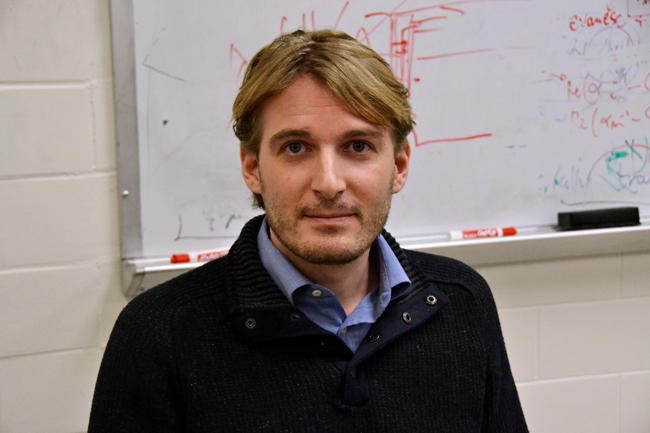Researchers at the Cockrell School of Engineering have built a new device that can manipulate acoustic sound waves with a technique that has never been used before.
The device, which the researchers have yet to officially name, is the first of its kind and uses a new technique in order to break “time reversal symmetry.” Time reversal symmetry is the theory that, if a wave is sent in one direction, another wave can be sent back the same way.
Andrea Alu, associate electrical and computer engineering professor and project’s leader, said there are many ways to break time reversal symmetry, which is crucial to maintain efficiency in wireless devices.
“This device is very useful for many devices we use today for wireless communications,” Alu said. “The standard way to break time reversal symmetry is using magnetic materials. They are expensive [and] based on materials we don’t have in the U.S. We have to buy them from China and Russia. They have several drawbacks.”
Wireless devices contain objects called circulators, in which waves travel in one direction but are not transmitted back. Romain Fleury, an electrical and computer engineering graduate student working with Alu, said it is necessary for circulators to break time reversal symmetry in wireless devices.
“Circulators make possible the use of only one antenna for both emitting and receiving signals,” Fleury said. “Without them, you would have no choice but to use two antennas — one for emission, one for reception — and, therefore, the system would be a lot more bulky and expensive.”
Alu said his team considered whether there was a different principle that could be used to do the same job. Fleury said the new device uses cheaper and more efficient tactics.
“We already have two patents on these ideas.” Fleury said. “I think it’s a pretty major discovery.”
Fleury said the experiment itself was straightforward, but developing the idea was the hardest part. Dimitrios Sounas, a postdoctoral fellow, assisted in the construction of the device.
“Together with [Fleury], I designed the experimental setup and performed the theoretical analysis,” Sounas said.
According to Alu, the same functionality of the device his team created could be implemented for other types of waves and solve many problems in the future.
Alu said the device has received widespread attention and was featured on the cover of Science Magazine. Fleury said it has the potential to be manufactured into a product for companies within the next few years.





















